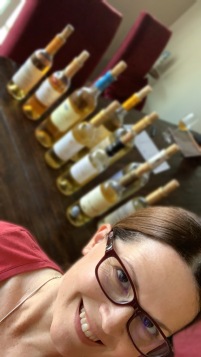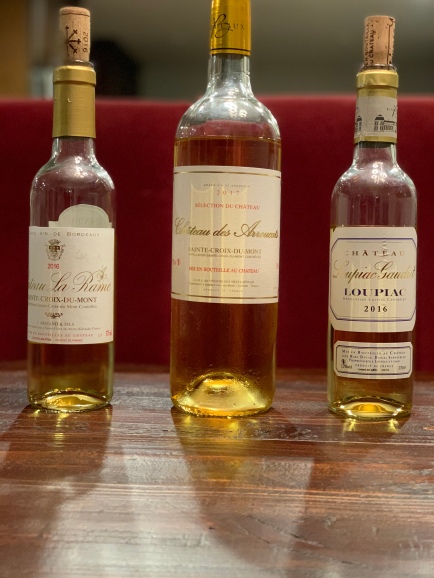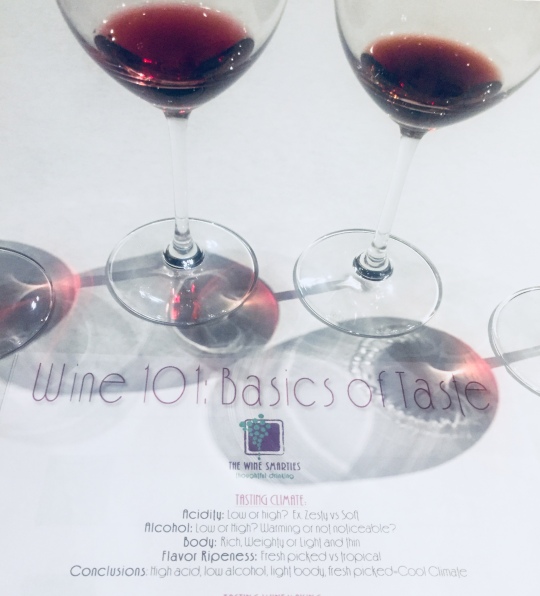Anyone who has ever worked in a winery tasting room knows the drill. A big ol’ party bus pulls up outside, a pile of people (let’s be honest – usually women) who have been imbibing all day stumble off, laughing raucously, snapping selfies or asking the driver to take yet another “quick picture” by the winery sign. As the group approaches – the tasting room staff concocts excuses like “I gotta go run inventory” or “I think the Riesling needs another racking today.” Anything that will get them out of the tasting room ASAP.
Beware the party bus.
I get it. I empathize with tasting room staff when it comes to party busses. Often these groups are loud, take up a lot of room, don’t listen when you’re describing the oak aging regime of your reserve Chardonnay, and if you haven’t been drinking with them all day – they’re pretty fucking annoying. (Come to think of it – even if you HAVE been drinking with them all day you might feel this way).

Instagram is full of snarky memes mocking these groups – how they all dress alike, traipse through vineyards or sit on barrels for “content”, and know next to nothing about wine. But before you write them all off as obnoxious wine newbies who just want free tastings – allow me to give you a little insight inside the bus.

Once a year for the past fifteen years, I’ve been a member of one such party bus. I have engaged in typical party bus behavior like doing splits in my jeans while listening to Neneh Cherry’s ‘Buffalo Stance’ and making smoochy faces to countless winery dogs (this IS typical – isn’t it?). I have also partaken in some not-so-typical party bus behavior like talking with tasting room staff about concrete fermentation, the recent spread of phylloxera in my Beloved Washington state and pending AVA applications.

Now, I realize that there are some party bus groups that try to get out of paying tasting fees, or steal glassware, or puke in the dump bucket. However, I think of these groups like corked wine. They don’t occur regularly (maybe between 2-5% of the time) and you wouldn’t write off all wine just because you had one that was flawed – would you?
If we’re going to stick with wine analogies (Hubs hates these!) – my party bus is a mixed case. While the other gals are not nearly as nerdy about wine as I am, many are better traveled (Mendoza, Sicily – two wine regions on my bucket list!). One can pronounce French labelling terms like nobody’s business. And some own easily twice as many bottles as I do – and belong to a lot more wine clubs as well.
My most recent Gals Wine Weekend trip took us to one of my favorite wine regions – Walla Walla. This year, I kept a close eye on how we were treated by tasting room staff. For the most part I was pleasantly surprised – there were a number of wineries who behold the party bus! Two in particular are worth a quick mention . . .

It’s almost not fair to compare other wineries to Sleight of Hand Cellars. They are a Grand Cru of fun tasting rooms – I mean, they have a magician for fuck’s sake! They were our first stop of the day and Traci and her tasting room staff set the bar pretty high – they were welcoming and FUN. Where else can you select an old-school, vinyl album to be played during your tasting, get your picture taken in a photo booth, all under the watchful eye of Neil Patrick Harris (his face graces the label of their Bordeaux style blend). Just like their eclectic album selection, Sleight of Hand’s wines are a wide range – from a zippy Riesling to a funky Syrah.
Our last stop of the day was The Walls who were welcoming and waiting for us. (I usually feel for the staff at our last stop because we are past our peak by this point.) We sipped through several of their wines – favorites were ‘Lip Stinger’ white Rhone blend and Gaspard Syrah. Our host gave us the entertaining backstory on the name of the winery (a play on the Washington State Penitentiary located a few miles away) as well as their ever-prevalent cartoon illustration – Stanley Groovy. One of the students in the first WSET class I taught is currently the hospitality manager and we all got in on this lovely photo together before walking out with several cases. 
It Pays to Behold the Party Bus – Literally.
According to a recent wine industry report, Direct to Consumer (DTC) sales account for over 60% of an average family winery’s revenue. The biggest DTC channels are wine clubs and tasting rooms. And unfortunately, consumers are visiting fewer tasting rooms when they travel to wine country – often seeking out just a couple of their favorite spots, or wineries providing the best experiences.
Tip for tasting room staff: honestly, with party bus groups, often it’s not about how good your wine is – it’s how you treat us. Over the years we’ve had a number of awesome experiences at wineries who produce good, but not mind-blowing, wines. However – because of how fantastic the staff were to us and their welcoming attitude – we’ve bought bottles, signed up for club memberships, recommended them to others, put them on our social media, and been repeat visitors.
On the other hand, if we’re treated condescendingly or there’s an unwelcome attitude – we don’t buy. Even if the wine is good. This happened only once on our most recent trip, and interestingly it was a winery whose wines I really enjoy. Unfortunately, the staff didn’t crack a smile our entire visit, gave an incredibly curt answer to the common question “how did [insert winery] get its name?” and made us feel like we were an imposition in his fairly empty tasting room. Not surprisingly – we walked out empty handed.
I’ve worked at a wine store, and I know that sometimes you just don’t feel like dealing with a large, boisterous group of wine tasters. But as a member of a party bus, I also know that we’re not usually asking for much. Your wine doesn’t have to have a big score, or win a bunch of local awards, or be certified and blessed by any organic or biodynamic organization. We will not remember these things! But we WILL remember Susie at Two Mountain Winery and Neil (and Bud!) at Cooper Wine Company because they were excited to have us in their tasting room and went above and beyond to make us feel welcome.
And on a personal note, since I moved away from my Beloved Washington state last year – I’ve come to realize how important this party bus group is to me. It’s hard to find women who support each other, who cheer each other on instead of compete with one another, and with whom you can just be your silly-ass self. Like I said – this group is 15 years strong. I hope we keep going . . . because I plan on attempting my splits well into my 60s. Won’t THAT be something to be behold? 😉





 11.
11. 

